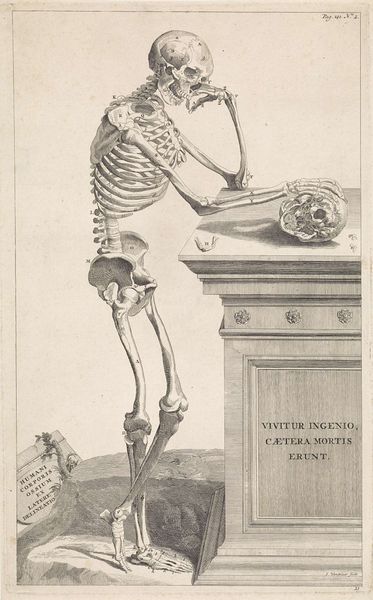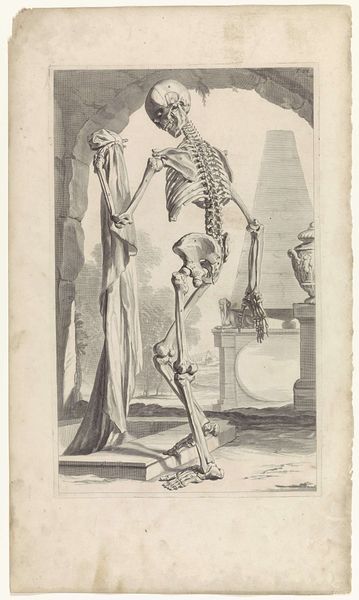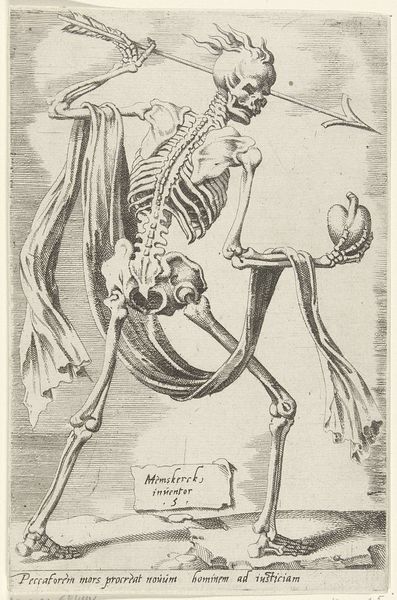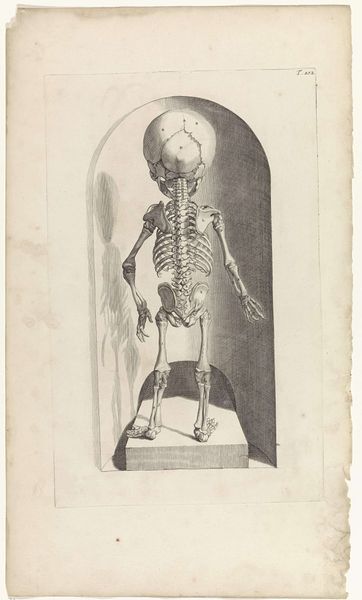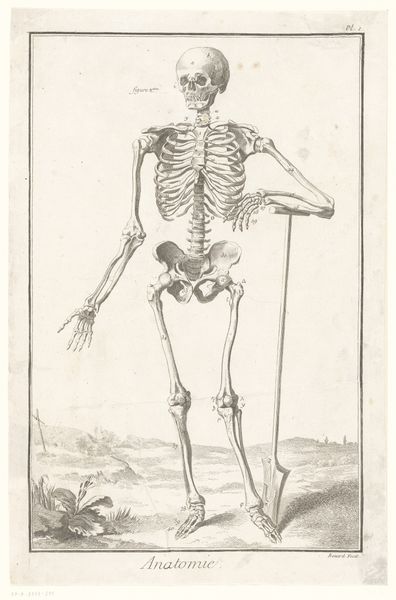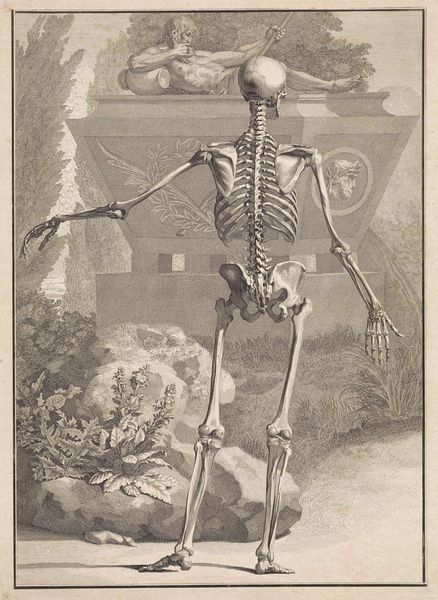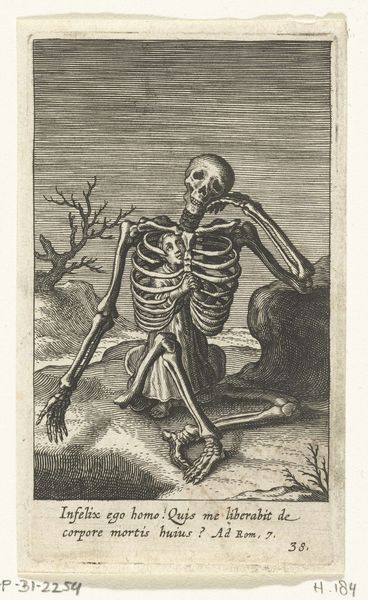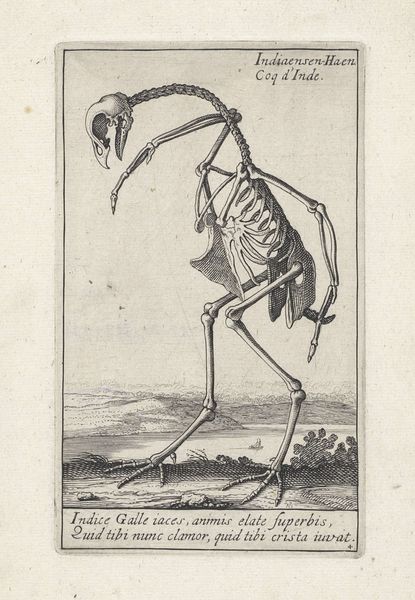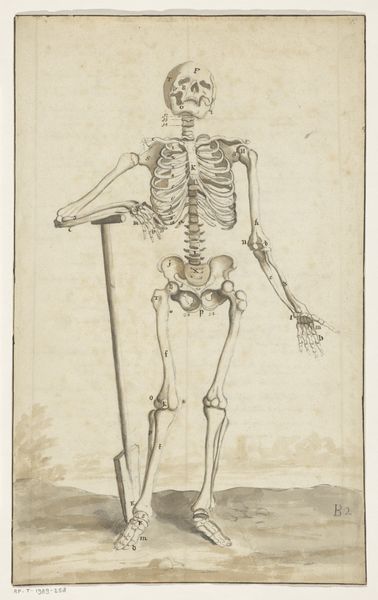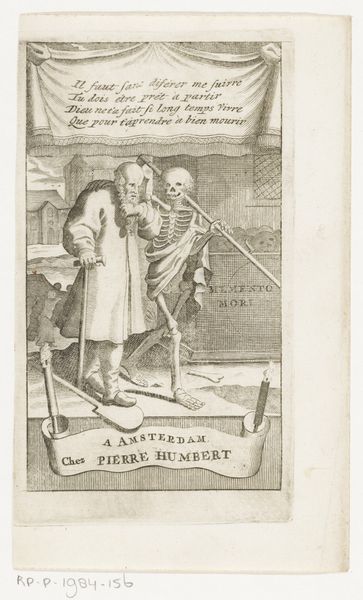
drawing, print, engraving
#
drawing
#
allegory
# print
#
old engraving style
#
mannerism
#
figuration
#
vanitas
#
line
#
history-painting
#
northern-renaissance
#
engraving
Dimensions: height 213 mm, width 138 mm
Copyright: Rijks Museum: Open Domain
Curator: Here we have Hendrick Hondius I’s "Death with an Hourglass and Arrow," an engraving from 1610, housed here at the Rijksmuseum. Editor: Striking! The grim reaper himself, rendered with such starkness. There's a palpable tension between the rigid, bony figure and the ornate details surrounding it. Curator: Hondius worked primarily as an engraver and publisher, creating prints for a wide audience. Think about the accessibility of this piece; printmaking allowed these allegorical themes to circulate widely, beyond elite art collectors. Consider the paper itself, likely relatively inexpensive, but holding so much social commentary. Editor: Exactly! This piece is layered with meaning. The hourglass is, of course, a memento mori, the arrow another emblem of inevitable mortality, piercing through temporal vanities. I also notice the Latin inscription below, “Post funera vita"—Life after Death.” It suggests that even death has purpose. Curator: The level of detail is remarkable considering it’s an engraving. Note how the line work builds tone and volume, from the textures of the bones to the shadows behind them. These lines would have been meticulously etched into a copper plate before printing. It is not simply an image but the result of intense physical labor, too. Editor: I find it fascinating how Hondius navigates religious belief through the depiction of death, touching upon contemporary sociopolitical circumstances such as the Counter-Reformation and plague. Death became an equalizer in a society defined by extreme power imbalances, disrupting both elite and subaltern subjects. Curator: Considering the era's artistic conventions, this blends Mannerist elements with the emerging sensibilities of the Northern Renaissance. The exaggerated pose and the intricate details are distinctly Mannerist, yet there is also an emphasis on clarity and naturalism emerging from the earlier, often heavily stylized, art traditions. Editor: Thinking about its accessibility through printmaking shifts how we understand the agency it held within that historical and societal frame. It transcends the status of an art piece by facilitating broader societal negotiations with questions regarding social, political, and existential crises. Curator: A valuable reminder that artworks like this aren’t just aesthetic objects; they are artifacts deeply embedded in material culture and societal realities. Editor: Indeed, challenging us to rethink our own contexts and engagements with death.
Comments
No comments
Be the first to comment and join the conversation on the ultimate creative platform.

